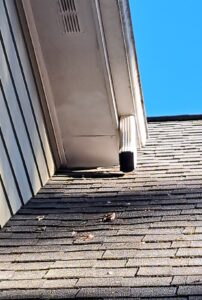What is Exclusion, and Do I Really Need It?
In a cultural sense, the word exclusion gives off a definitively negative vibe. I mean, no one wants to be excluded, left out.
 However…in the world of pests and wildlife, exclusion is most definitely a positive term, especially if you’re a homeowner. I guess the bugs and wildlife feel differently, but let’s go with the assumption that the homeowners are the ones reading this article and say, exclusion of pests and wildlife from our homes is a positive! Sorry bugs and wildlife, I’m not looking for any unwanted guests at the moment.
However…in the world of pests and wildlife, exclusion is most definitely a positive term, especially if you’re a homeowner. I guess the bugs and wildlife feel differently, but let’s go with the assumption that the homeowners are the ones reading this article and say, exclusion of pests and wildlife from our homes is a positive! Sorry bugs and wildlife, I’m not looking for any unwanted guests at the moment.
Down to business, the exclusion business!
Exclusion, as pertains to pests and wildlife control, refers to the process of fortifying a home against animal and pests invaders. At Canton Termite and Pest Control, we offer complete home exclusion services. Some examples of common pests often excluded are rats, mice, bats, squirrels, and ever so often snakes.

Why do you need to consider exclusion?
Obviously, if you know you already have a problem, this is the time to act because expensive damage happens quickly. Perhaps you might suspect you have a problem, but you aren’t sure. The most obvious signs of a problem include strange or bad smells, noises such as scratching and scurrying, and the visual sign of animal droppings in and near the home. Or you might be one of the lucky homeowners who doesn’t have any issues but definitely wants to prevent possible problems. In all of these cases, exclusion is an excellent choice.
The first step in exclusion work is to identify the weak spots, that is to say the points of entry for the critters. A thorough inspection is required in order to do this first step well. Our wildlife team is trained and experienced to look for cracks and crevices where easy access is possible.
What exactly are those weak points? Homeowners are more likely to find wildlife coming in and living in attics, chimneys, crawlspaces, and roofs. The typical places of entry could include gaps left during construction or placement of plumbing and electrical lines, fascia boards, soffits, eaves, vents, and around garage doors. Plumbers and hvac installers will often make oversized holes for plumbing and ductwork. This makes it easy for critters to find their way inside. And the tricky part is that rats can get into a house through a hole the size of a quarter! Think that’s small? A mouse can get into a hole the size of a dime! So yeah, it takes an expert doing a thorough inspection and knowing where to look to find the problems.
After identifying points of entry, our experts can answer an important question: Are the entry points active? The reason this is so vital to correctly answer is that no one wants trapped animals inside the home. There are correct seasons and methods to make sure your home is protected and the wildlife is back outside where they belong. For example, according to the DNR, there are restrictions on removing bats during the pupping season. Between April 1st and July 31st, the babies are too young to care for themselves and cannot fly. They are helpless. A caring company would not risk trapping momma outside where she cannot care for her young, so some jobs must wait for the appropriate time.
What are the tools of the trade? Our team uses a variety of weather resistant materials in the process of exclusion. Included in our lineup is metal flashing, galvanized screening materials, caulk, steel and copper wool, and a number of other unique, task-specific items to complete the job. In the case of animals who are still in the home, we use a one-way door which allows the animals to get out but not come back inside.
As fall approaches, everyone, including the wildlife, is looking for a warm place to spend the winter. Call Canton Termite and Pest Control to prevent unwanted guests in your home!
770-479-1598
By: Tim
